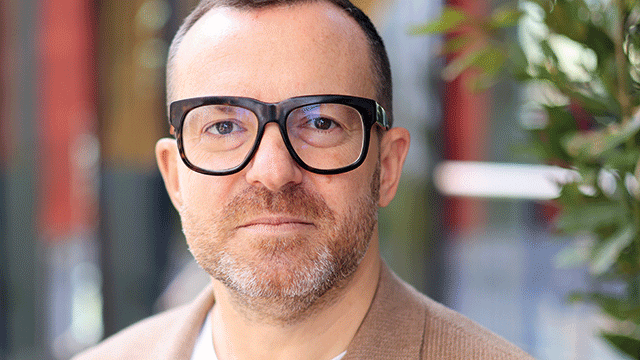Cambridge Question Time: Is the arc a glamour project?
The Growth Corridor, a plan to create five new towns in the South East, has attracted widespread support – but it could fall down over a lack of prior planning.
The so-called Oxford-Milton Keynes-Cambridge Growth Corridor – or “Brain Belt” – covers 22 council districts. With its positioning as a regional hub for life sciences and artificial intelligence businesses, it is a prospective major driver for growth in the UK.
But a report published last month by the UK National Infrastructure Commission (NIC) highlighted the pressures involved. For example, in order to deliver a million new homes in the corridor by 2050, it advised that the current rates of housebuilding will need to double.
The Growth Corridor, a plan to create five new towns in the South East, has attracted widespread support – but it could fall down over a lack of prior planning.
The so-called Oxford-Milton Keynes-Cambridge Growth Corridor – or “Brain Belt” – covers 22 council districts. With its positioning as a regional hub for life sciences and artificial intelligence businesses, it is a prospective major driver for growth in the UK.
But a report published last month by the UK National Infrastructure Commission (NIC) highlighted the pressures involved. For example, in order to deliver a million new homes in the corridor by 2050, it advised that the current rates of housebuilding will need to double.
Meanwhile, the government has also pledged to create an “Expressway” – a dual carriageway from Oxford to Cambridge – as well as an east-west rail link. On the latter objective, the NIC says that the central section between Bicester and Bedford alone will require £1bn upfront from the government.
Given the scale of the ambition, panellists at EG’s Cambridge Question Time at The Guildhall, warned that far more preparatory work needed to be done.
“For a lot of people this is a glamour project but there are a lot of things that need to be sorted before we build a super highway. We need to co-ordinate with the private sector to deliver this,” said Emma Fletcher, managing director at SmithsonHill, a joint venture between Russell Smith Farms and Hill Commercial Investments.
[caption id="attachment_952572" align="alignnone" width="847"] Emma Fletcher[/caption]
Derek Carr, chairman and partner at local accountants PEM, added: “I expect a lot of investment will come from private investors. This is a huge opportunity for people to set their stall out for how modern living should actually work. This is our opportunity as a shop front to the world.”
[caption id="attachment_952570" align="alignnone" width="847"] Derek Carr[/caption]
Budget boost?
But for the time being, the project has been supported by government investment. In his Budget last month, Philip Hammond announced a £20m boost for the central section of the east-west rail link.
James Palmer, mayor of Cambridgeshire & Peterborough, commented: “I am pleased with the additional £20m but our businesses are restrained by appalling infrastructure. We need to invest in Cambridge to allow our businesses to continue what they do so well. This will involve new infrastructure linking science parks to the centre of the city and fingering out into the wider region, and delivering garden villages.”
[caption id="attachment_952569" align="alignnone" width="847"] James Palmer[/caption]
Colin Brown, director of portfolio development at the Howard Group, added that, politically speaking, the £20m investment sum could be seen as “a hot potato”.
“Investing in such an affluent area of England when there are some large infrastructure projects in other parts of the country could be a difficult one,” he said.
However, he pointed to the need to support the region to allow its ambitious proposals to come to fruition. “Cambridge is at risk of its infrastructure not being able to cope with another Astra Zeneca.” (Pharma giant Astra Zeneca moved its UK headquarters to Cambridge in 2013.)
But as to how far the infrastructure and housing splices up the “green belt” around the city, the panellists were more divided.
Palmer said that, where appropriate, developers should look at building on the green belt. “The green belt is protected but the university has managed to build on it…We have to be careful and work out if we need to build on it. I think if we build the right infrastructure then we can use land slightly outside the green belt to develop those garden villages. But we are not blessed with millions of acres of brownfield sites.”
Fletcher, meanwhile, argued there was too much focus on people’s access to Cambridge. “We talk a lot about getting people in. We have to sell this project to the people living in the city as well. People want to get out at the weekend. We have to think about quality of life and how we tie it into the growth. I want to build a 1,000-acre wood for Cambridge. We have to think big about infrastructure and who looks after the landscape.”
[caption id="attachment_952574" align="alignnone" width="847"] Colin Brown[/caption]
Brown concluded: “Cambridge has managed to retain a high quality of life. We need the right development in the right places, not just a belt of sterile arable farmland that surrounds the city.”
Green belt debate aside, it seems there are more than a few loose ends to work out before the somewhat superficial deadline of 2050. Ultimately, if this is truly to be more than a glamour project, all stakeholders involved should take stock of the small details to achieve the loftier goals.
Top talent will come to Cambridge if housing and services are in place
Rob Sadler, head of Savills’ Cambridge office, answers the questions:
[caption id="attachment_952571" align="alignnone" width="847"] Rob Sadler[/caption]
How achievable are the ultimate goals of this project?
RS: I think the government has its full support behind this, given that Cambridge is important as a life sciences hub. It has attracted a lot of attention. In the past five to six years, we have seen this hub really expand as new businesses have moved in. Amazon, Apple, Microsoft, Softbank have all come into Cambridge. The downside of that is we don’t have the infrastructure to support it – not just roads and transport, but housing as well. Cambridge is now one of the most expensive places to buy a house – the average house price is around 14 times the average salary – equal to London – compared with a national average of nearly eight times.
What will the “garden villages” look like?
RS: We don’t want Cambridge to be a sprawling metropolis. It is still a medieval city surrounded by green belt. However, we are looking at future developments coming forward outside the green belt, linking in with the arc to Oxford and infrastructure being planned. These new garden cities will be a place for people to live and work and they will be able to more easily commute back into Cambridge city.
I think there is a misunderstanding that you are going to shift some employment in Cambridge to move out to these locations. We are not sure this is going to happen. The key is to provide the accommodation so you can bring the talent back to Cambridge at a fast pace.
What else is affecting house prices in Cambridge?
RS: This project is a long-term play – we realise right now that we are suffering. House sales have stalled in the city. People are moving here and renting but they are not buying property, partly as a result of to Brexit. I think we will see a pronounced price correction over the next six months but we need to bring that housing costs to salaries ratio of 14 down to somewhere closer to the national average.
The Growth Corridor, a plan to create five new towns in the South East, has attracted widespread support – but it could fall down over a lack of prior planning.
The panel
Colin Brown, Howard Group
Derek Carr, PEM
Emma Fletcher, SmithsonHill
Mayor James Palmer, Cambridgeshire & Peterborough Combined Authority
Rob Sadler, head of Cambridge Office, Savills
Chair: Damian Wild, editor, EG
Images © Matthew Power Photography
To send feedback, e-mail anna.ward@egi.co.uk or tweet @annaroxelana or @estatesgazette











